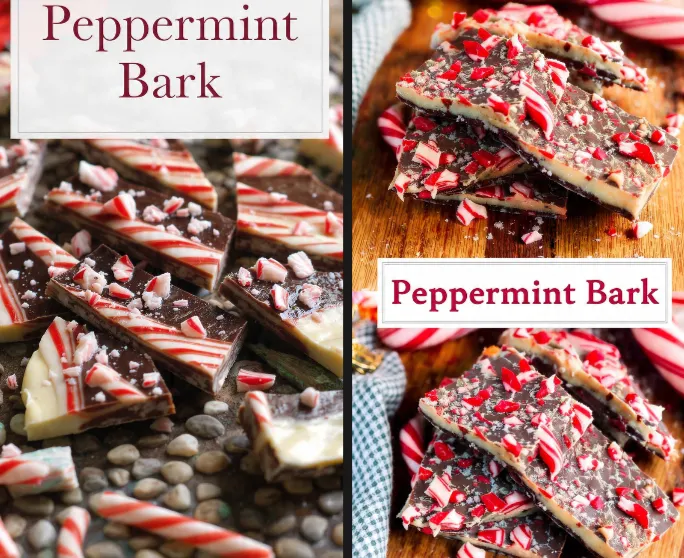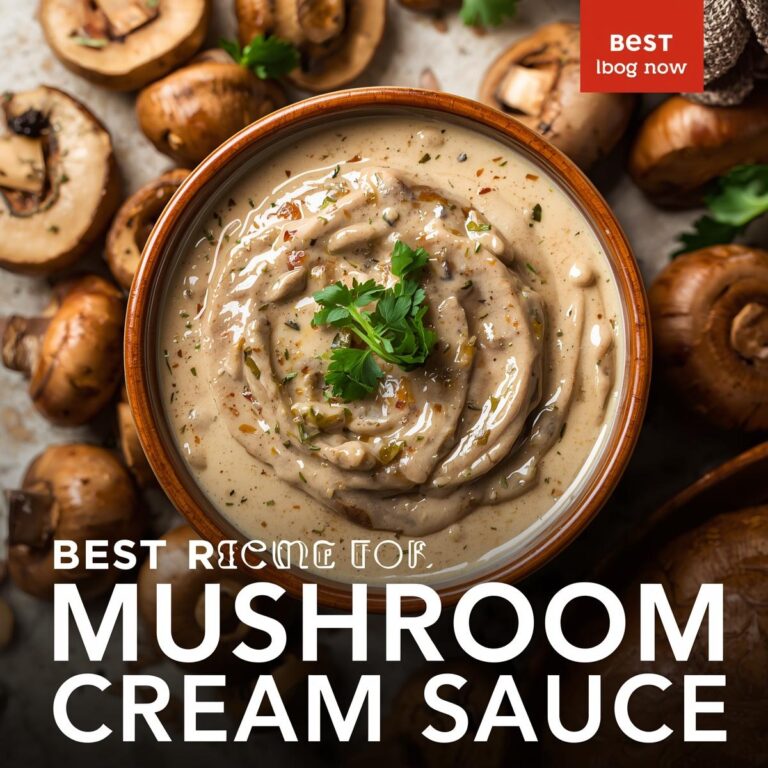Peppermint Bark is one of the most iconic holiday treats — a perfect combination of rich chocolate, creamy white chocolate, and the refreshing crunch of peppermint candy. It’s simple to make, beautiful to serve, and ideal for gifting during the festive season. With its striking red and white appearance and irresistible flavor, Peppermint Bark captures the essence of Christmas in every bite.
The beauty of Peppermint Bark lies in its simplicity. It requires only a few ingredients — dark chocolate, white chocolate, and crushed candy canes — yet delivers a flavor and texture that feels luxurious. The contrast between the smooth chocolate layers and the crisp peppermint topping creates a treat that’s both indulgent and refreshing.
This recipe works because it balances sweetness and freshness. The dark chocolate provides depth and richness, the white chocolate adds creaminess, and the peppermint candy brings a cool, crunchy finish. It’s a treat that appeals to both kids and adults, making it a holiday staple.
Ingredients and Their Roles
Dark chocolate: Provides a rich, bittersweet base that balances the sweetness of the white chocolate.
White chocolate: Adds creaminess and a snowy contrast to the dark layer.
Peppermint extract: Enhances the minty flavor.
Crushed candy canes: Add crunch, color, and festive flair.
Step-by-Step Recipe
Ingredients (makes about 20 pieces)
200 g dark chocolate (60–70% cocoa)
200 g white chocolate
½ tsp peppermint extract
6–8 candy canes, crushed
Preparation
Line a baking sheet with parchment paper. Melt the dark chocolate in a heatproof bowl over simmering water or in the microwave in 20-second intervals, stirring until smooth. Stir in half the peppermint extract. Pour the melted dark chocolate onto the prepared sheet and spread it evenly into a rectangle about ¼ inch thick. Refrigerate for 15 minutes until set but not hard.
Melt the white chocolate using the same method. Stir in the remaining peppermint extract. Pour the white chocolate over the dark chocolate layer and spread evenly. Immediately sprinkle crushed candy canes over the top, pressing them lightly into the surface. Refrigerate for 30 minutes or until completely set.
Once firm, break or cut the bark into pieces. Store in an airtight container at room temperature for up to 2 weeks or in the refrigerator for longer freshness.
Tips for the Perfect Peppermint Bark
Use high-quality chocolate for the best flavor and texture.
Do not overheat the chocolate — melt gently to prevent seizing.
Add the peppermint extract sparingly; too much can overpower the chocolate.
Crush candy canes just before using to keep them crisp.
Let each layer set slightly before adding the next to prevent mixing.
Variations and Flavor Combinations
Classic Peppermint Bark: Traditional version with dark and white chocolate layers.
Triple Chocolate Bark: Add a layer of milk chocolate between dark and white.
Salted Peppermint Bark: Sprinkle sea salt over the top for a sweet-salty twist.
Nutty Peppermint Bark: Add chopped almonds or pistachios for crunch.
Vegan Peppermint Bark: Use dairy-free chocolate and vegan candy canes.
Gourmet Peppermint Bark: Add a drizzle of caramel or edible glitter for elegance.
Serving Suggestions
Peppermint Bark is perfect for holiday dessert tables, cookie platters, or edible gifts. Wrap pieces in cellophane bags tied with ribbon for a festive presentation. It also makes a beautiful addition to hot chocolate bars or Christmas stockings. Serve it alongside coffee, cocoa, or mulled wine for a cozy winter treat.
Make-Ahead and Storage
Make-ahead: Peppermint Bark can be made up to two weeks in advance.
Storage: Store in an airtight container in a cool, dry place. Avoid humidity to prevent the candy from becoming sticky.
Freezing: Freeze in layers separated by parchment paper for up to 3 months. Thaw in the refrigerator before serving.
Nutritional Information (per piece)
Calories: 180 kcal
Carbohydrates: 20 g
Sugar: 18 g
Fat: 10 g
Protein: 2 g
The History of Peppermint Bark
Peppermint Bark has become a holiday classic in North America, popularized by confectioners and coffee shops during the Christmas season. Its origins trace back to the early 20th century, when candy makers began combining chocolate and peppermint for festive treats. Over time, it evolved into the layered bark we know today — a symbol of holiday cheer and homemade sweetness.
Flavor and Texture Profile
The perfect Peppermint Bark is smooth, crisp, and balanced. The dark chocolate provides a rich foundation, the white chocolate adds creamy sweetness, and the peppermint candy delivers a refreshing crunch. The combination of textures — silky, crunchy, and melt-in-the-mouth — makes it irresistible.
Common Mistakes and How to Avoid Them
Chocolate separating: Let the first layer set slightly before adding the second.
White chocolate seizing: Melt slowly and avoid contact with water.
Candy canes melting: Add them only after spreading the white chocolate.
Uneven layers: Spread each layer evenly with an offset spatula.
Overpowering mint: Use peppermint extract sparingly.
Baker’s Tips
Use a silicone spatula for smooth spreading.
Chill the bark just until set — over-chilling can cause cracking.
Break into irregular pieces for a rustic look or cut into squares for uniformity.
Add a few drops of red food coloring to the white chocolate for a marbled effect.
Serve slightly chilled for the best texture.
Pairing Ideas
1With Drinks: Pair with hot chocolate, peppermint mocha, or coffee.
2With Food: Serve alongside cookies, truffles, or fruit platters.
3With Occasions: Perfect for Christmas, New Year’s, or winter weddings.
The Joy of Holiday Treats
Peppermint Bark embodies the joy of holiday treats — simple ingredients transformed into something magical. It’s a dessert that brings comfort, nostalgia, and a touch of sparkle to the season. Whether made for gifting or sharing, it’s a symbol of warmth and celebration.
The Science of Chocolate Tempering
Tempering chocolate ensures a glossy finish and crisp snap. Melt two-thirds of the chocolate, then add the remaining third off the heat to cool it slightly. This process aligns the cocoa butter crystals, giving the bark a professional texture and shine. Properly tempered chocolate also resists blooming — the white streaks that appear when chocolate isn’t cooled correctly.
Presentation and Finishing Touches
For a stunning presentation, arrange Peppermint Bark pieces on a festive platter lined with parchment paper. Sprinkle extra crushed candy canes or edible glitter for sparkle. For gifting, layer pieces in decorative tins or glass jars tied with ribbon. The contrast of red, white, and dark chocolate makes it visually striking and instantly festive.
Modern Variations
Keto Version: Use sugar-free chocolate and low-carb peppermint candies.
Vegan Version: Use dairy-free chocolate and vegan candy canes.
Low-Calorie Version: Use dark chocolate with higher cocoa content and less sugar.
Gourmet Version: Add crushed freeze-dried raspberries or pistachios for color.
Dessert Version: Use Peppermint Bark as a topping for brownies, cupcakes, or ice cream.
The Perfect Bite
The perfect bite of Peppermint Bark is smooth, cool, and crunchy all at once. The chocolate melts on the tongue while the peppermint candy adds a refreshing burst. It’s a treat that feels indulgent yet light, festive yet simple — the essence of holiday joy in every piece.
Conclusion
Peppermint Bark is sweet, minty, and perfectly festive — a holiday classic that’s as beautiful as it is delicious. With its layers of dark and white chocolate topped with crushed candy canes, it’s ideal for Christmas parties, edible gifts, or cozy winter nights. Easy to make and endlessly adaptable, it’s a timeless treat that captures the magic of the season. This recipe proves that with just a few ingredients and a touch of creativity, you can create a dessert that’s both elegant and heartwarming — a true celebration of holiday sweetness in every bite.






